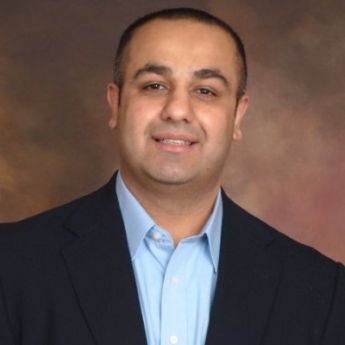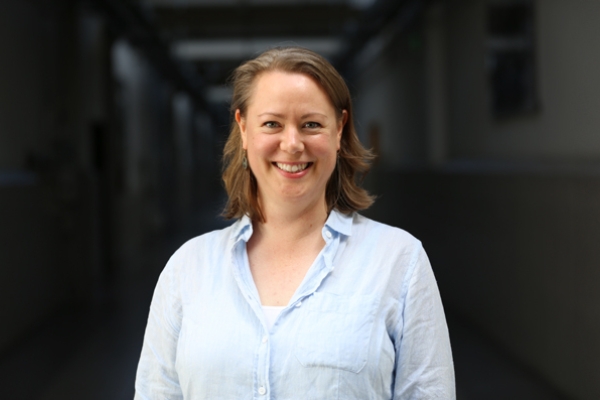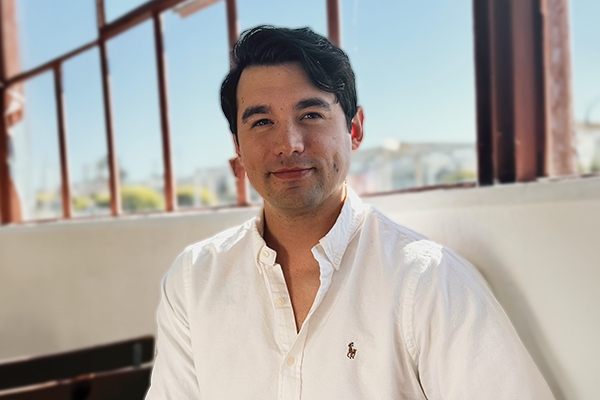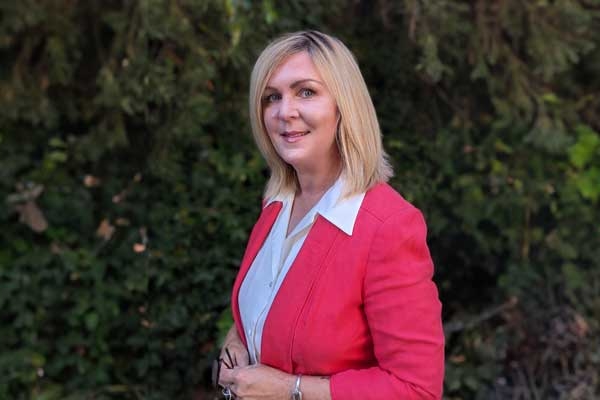That headline still holds true, even three years later after our initial check-in with project management instructor Anoop Grover. The world is not standing still—and Anoop is helping to battle the ongoing surge of COVID-19.
How?
Since the beginning of this year, Anoop transitioned from his position at Uber to COO at TrueCare24, a tech company whose mission is to provide care to those who need it and to help care-providers connect with the former. That mission is needed now more than ever as the COVID-19 pandemic shows no sign of slowing down.
On the B2B end, TrueCare24 offers end-to-end service and best practices to protect employees, students and administration with assessments, education, systems monitoring, systems addressing and reporting. Examples include on-site temperature checks, COVID-19 tests for employees and a daily symptoms check app.
Direct-to-consumer, the company provides assistance in personal and live-in services. For each client, TrueCare24 taps into its vast network of caregivers, relying on its advanced AI platform to find the best solution.
Anoop’s role is leading all facets of operations. “This is all-encompassing,” he says, “from ‘the hire to the retire’ to curating and cultivating our marketplace with our professionals to front-line growth and direct profit-and-loss accountability. There is never a dull moment. It’s inspiring to genuinely help people who want to work in a gig economy and ensure our customers achieve their desired outcomes.”
As the pandemic continues, I’m engaged daily with our product team on building and expanding our service portfolio at scale.
How has the company—and your position—adapted in light of COVID-19?
While the Nasdaq doesn't show it, signals of a recession are imminent. However, we saw this crisis as an opportunity. As unemployment numbers continue to climb and the global pandemic persists, we have been fortunate to grow and expand substantially—internal team members, professionals in the marketplace and end customers (B2B and B2C).
It’s truly humbling and remarkable to see how our company is creating jobs in the U.S. and helping customers and their employees return back to work safely.
Today, we’re touching a number of essential services across myriad industries, including apparel, construction, defense, food and beverage, health and beauty, events and campaigns, automotive, logistics, manufacturing, pharma, retail, real estate, gaming and education. We’ve partnered with some of the largest brands in the world.
Due to the nationwide reach of the marketplace, we’re able to dispatch people and PPEs nearly instantaneously to both the enterprise and the consumer directly.
In general, the situation with COVID-19 is extraordinary both for the whole world and for businesses. As the pandemic continues, I’m engaged daily with our product team on building and expanding our service portfolio at scale.
What processes of project management come into play the most in this position?
Essential facets of stakeholder management—such as scoping, planning, portfolio management, risk management and launching services—are front and center. Speed and velocity are critical, and we’ve taken an Agile approach to have features and services deployed regularly without compromising quality.
Additionally, maintaining the appropriate balance is paramount. We need to be aware of working and evolving in an integrated work/life.
I recently had a Saturday morning project management class, during which my daughters met all of my students. This new way of working will be around for decades to come. We’ve all realized teams can be productive over video conferencing and unified communications.
How do you bring your work at TrueCare24 to your project management class? I would imagine that this timely work would be illuminating to students.
Each class I've taught during the past 5-plus years, I’ve learned as much from each student as they’ve learned from our discussions and my expertise. It’s truly an opportunity to draw from prior experience and gain new insights.
As we are learning how to do business during this worldwide pandemic, we have to keep in mind that there is no playbook or blueprint. The world is evolving, and so are we.
December 2017
Unless you’ve been living under a rock, you know that technology changes in an instant. What was once cutting-edge is now obsolete. Creativity, IT, scalability. The interplay between these moving forces requires a steady hand and an oversight that only can come from a seasoned project management professional.

So it’s no surprise that Uber tapped into the rich executive experiences in project and program management of Anoop Grover. With previous leadership roles at companies like FOX, Symantec, Sun Microsystems and Cisco, Anoop is focusing on hyperscale with the ride-sharing company. As a seasoned project leader, he is fully invested in keeping abreast of changing practices and adopting the latest tools—oh, and while maintaining a impressive work-life balance.
I spoke with Anoop—who is also one of our esteemed instructors—to learn more about his experiences as a project manager and leader at technology companies and how he brings that wealth of information to his instruction.
What attracted you to a career in technology?
It’s the constant rate of change. I got into technology because of my passion to build scalable solutions.
What we build today completely evolves: when you look in the rearview mirror, it looks like the Stone Age. The rate of change is so rapid and prolific that what you introduce today can feel like a dinosaur in just a few years from now.
Also, my interest in the expansion and consolidation of application and infrastructure providers has kept me passionate over the years.
The rate of change is so rapid and prolific that what you introduce today can feel like a dinosaur in just a few years from now.
How do you deal with that rapid rate of change when projects are increasingly collaborative and require a large team?
As a leader, I know that I’m no longer going to be an expert when it comes to an application, a technology or a platform. I realized that a long time ago.
I invest in reverse-mentoring: Learning from my team, who can educate me on the latest patterns and the latest technology evolutions, and I coach and develop them on building high-performing and scalable systems, processes, capabilities and teams. I focus my time on developing and coaching my team to operate without me, starting with front-line employees, whom I lead. The most effective way to learn from the team is to job shadow, allowing me to learn about a the “day in the life” of an employee.
There is a lot of pressure on tech companies to diversify their workforces. How do you view this priority?
As an immigrant and a minority, suffering through adversity was a part of my upbringing and helped define who I am today.
Diversity & Inclusion (D&I) in the workplace is super-important because you get the best of cultural and team interactions. Plus, you’re not focused on one social or geographical location. It’s a great opportunity for people to interact with global team members with diverse backgrounds, which gives you a way to really embrace the best of a global workforce. This is a true inspiration for me not only in the workplace, but also personally. I’ve been fortunate to have worked for some great employers who have the same values. Today, I’m inspired to work for Uber which has a laser focus of D&I.
From a project manager standpoint, what techniques have you found to be most effective in motivating your team?
I think about my experiences when I was at FOX. Within my first 90 days, I outlined a multi-year strategy, making sure we could balance people, strategy and execution effectively. I leveraged vision alignment tools by being very clear about what the end state looks like and creating a roadmap on how to enable it.
This involves detailing what the logical steps are, from the vision to the strategy to the realization—and making sure that you have the right skills to support that. You have the strategic intent of the drivers, you have the right focus on coaching and developing your team, and then where you don’t have the skills, you hire for them directly or indirectly. And then you put forth logical operating plans with the right operating rhythm to execute.
How do you balance achieving this vision with work-life balance?
The biggest career development I had is when a friend, peer and leader suffered from a heart attack at work. At that time, we were on a death march: working 80-plus hours a week with no end in sight.
We continued to operate at that non-sustainable pace, and my biggest learning was to reset expectations. If you’re at a point where you have unrealistic goals or you have objectives and outcomes that can’t be achieved, reset expectations on what can be achieved. Philosophically, maintaining the appropriate balance among family, health and job is always at the forefront.
This goes into sizing, into scoping, into expectation management. This is all what I consider to be part of effective project management.
Project management practitioners have had to really adapt to leading and manifesting global organizations and teams.
How has project management in the tech industry evolved?
When we think about trends in the industry, over the past five to 10 years, these come to mind:
Globalization: Project management practitioners have had to really adapt to leading and manifesting global organizations and teams. They need an understanding of how to work in diverse cultures, with diverse holiday schedules and other diverse timings. Learning how to do your work in a global workforce is key.
As an example, I work from home periodically because the Bay Area has a pretty daunting commute pattern. This enables me to have dinner with my family, and then join a call in a different time zone. So project managers need to be able to manage and adjust for everyone’s irregular and global work schedules by utilizing technology and collaboration tools. There are dozens of them out there in the industry today. The best option is to pick one, ensure your team is trained on it and leverage it.
Automation: How do you contribute to functions that are in continuous automation? So you’ve got to understand what paths can be automated as a project manager versus ones that you’ve got to be able to own and control.
Focus on the outcome: As a project manager, you are accountable to deliver final outcome to your sponsor. Years ago, PMs would focus on coordinating the schedule. Today, you need to ensure that you maintain congruence of scope, plan and budget to achieve the final outcome: a successful, scalable solution enabled. By focusing on the outcome, communicating regularly and ensuring you have the appropriate operating rhythm in place, you help cultivate a great solution for your end customers and stakeholders alike.
Shifts from the traditional waterfall model to Agile: Showing incremental value on projects is essential. Building upon the frameworks of iterative sprints, you need to aggressively showcase progression with projects, ensuring alignment and momentum are maintained.
Learning from mistakes: Projects and programs are often misaligned and outcomes not achieved. Learning opportunities range considerably, from scoping to sizing to estimating to executing. It’s super important to ensure that as new learnings surface, a reset of expectations occurs. You need to balance risks appropriately and understand that every facet of the project may not be achieved as initially envisioned. Where appropriate, quickly assess, continuously learn and move forward.
By focusing on the outcome, communicating regularly and ensuring you have the appropriate operating rhythm in place, you help cultivate a great solution for your end customers and stakeholders alike.
What advice do you have for students who are thinking about going into project management or taking on a project management role within their organization?
Be clear on your career passions and progression. Project management is often a catalyst to general management and executive management because what you’re exposed to is aligning the congruence among a scope, a plan and a budget. Organizational leaders are focused around delivering outcomes; so is a project manager. You get the first fundamental steps in organizational leadership and management as a project manager.
As you’re progressing on that career path, learn as much about your domains as you can. Do you want to be a generalist or a specialist within the domain? A generalist is one who knows the fundamentals—the specifics around scope management, budget management and issue management—but may not know the actual domain, whether it be real estate, construction, or oil and gas.
On the other hand, the specialist may know not only the project management techniques and disciplines, but also the industry and domain. It gets very interesting if you know both of those. So if you’ve got a passion within the industry, learn about the industry as you develop your specific discipline.
What do students have to look forward to when they take one of your courses?
I draw upon my 20 years of experience, and leverage not only case studies but also hypothetical scenarios built upon my experiences. Students have a unique opportunity to engage with this learning when they take one of our classes. You get the Berkeley name and brand; you have your choice of local in-person classes, hybrid classes or online classes. Nowhere else in the world can you get the instructors teaching from Silicon Valley—the technology epicenter.
Check out project management courses taught by Anoop Grover and other incredible leaders here!



